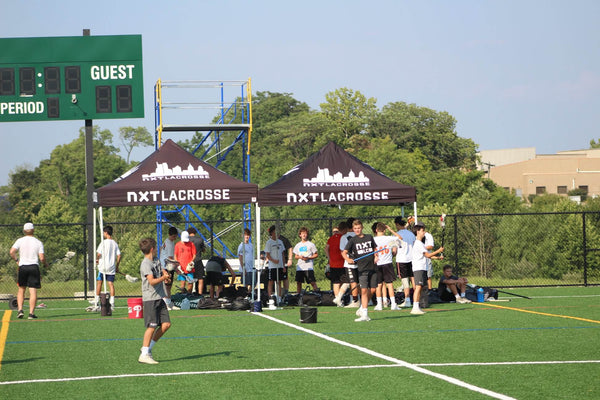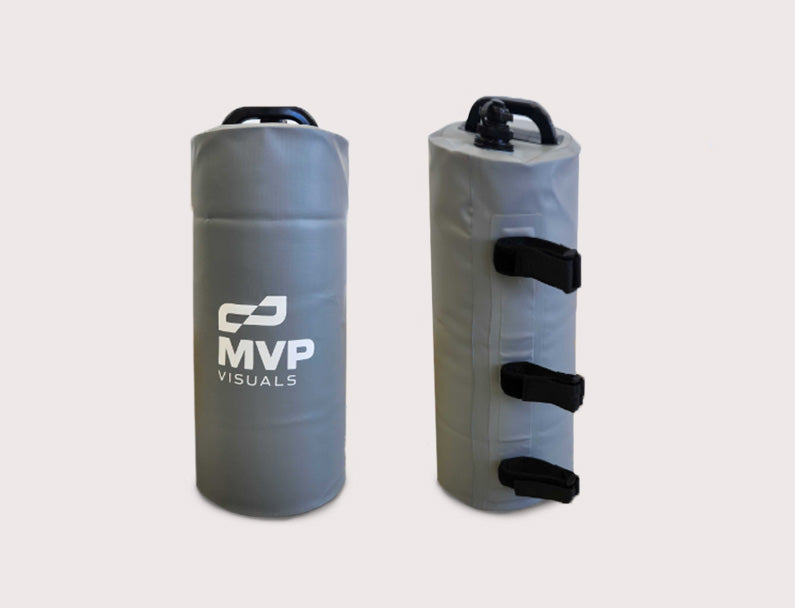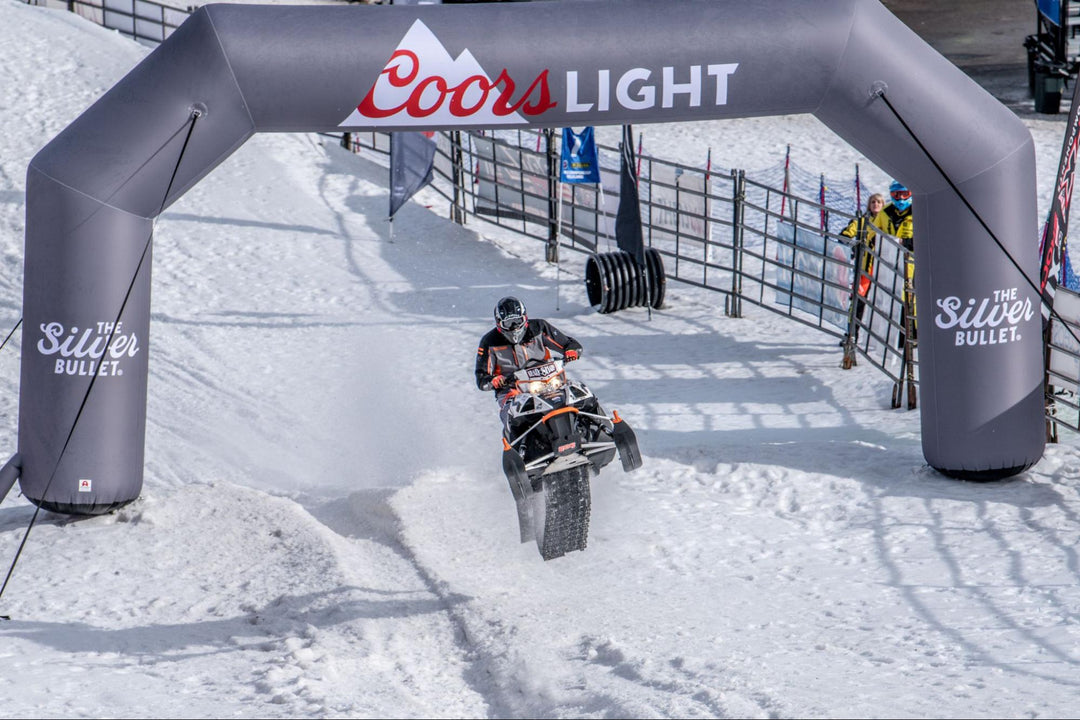Are you wondering how much weight is needed to securely hold down a canopy tent, whether it's a 10x10 or a larger 10x20? This comprehensive guide is designed to answer exactly that.
But be warned, without the right weights, your tent might just throw a 'tantrum' in the wind – and nobody wants to deal with a canopy-sized kite!
For a quick reference, a 10x10 canopy tent typically needs 30-40 lbs per leg in calm conditions and 75-125 lbs per leg in windy scenarios. In contrast, a 10x20 canopy tent requires 60-80 lbs per leg under normal conditions and 150-250 lbs per leg when the wind picks up.
Here, you'll find detailed insights into these weight requirements, along with a thorough exploration of the safest and most effective types of weights to use, ensuring your canopy tent remains stable and secure in any setting.
How Much Weight is Needed for a 10x10 Canopy Tent?
When setting up a 10x10 canopy tent for events such as fairs, trade shows, or farmers markets, one crucial aspect to consider is how much weight is required to ensure stability and safety.
The amount of weight needed can vary significantly based on whether conditions are windy or calm, as well as the type of surface on which the tent is set up. Understanding these requirements is key to ensuring that your tent remains secure and functional throughout the event. NXT Lacrosse properly secured their custom canopy tents using MVP Visual's canopy weight bags
NXT Lacrosse properly secured their custom canopy tents using MVP Visual's canopy weight bags
Non-Windy Conditions / Indoors
In situations where wind isn't a concern, the weight requirements for a 10x10 canopy tent are relatively modest. Here's a breakdown based on different surface types:
- On Grass/Dirt/Soil: A weight of about 30-40 lbs per leg is generally adequate. This provides enough stability on these naturally more gripping surfaces.
- On Hard Surfaces: If the tent is placed on concrete, asphalt, or other hard surfaces, 20-30 lbs per leg is recommended. These weights are sufficient to keep the tent anchored in place.
- On Sand/Beach: For sandy surfaces like beaches, a slightly higher weight of 40-50 lbs per leg is advisable due to the loose nature of sand.
Windy Conditions
Windy conditions necessitate additional weight to prevent the tent from shifting or becoming airborne. Here’s what is needed for different surfaces:
- On Grass/Dirt/Soil: In windy scenarios, each leg should be weighted with 75-100 lbs to combat the increased force of the wind.
- On Hard Surfaces: For windy conditions on hard surfaces, 50-75 lbs per leg is the norm. This increased weight helps counteract the lack of natural anchorage.
- On Sand/Beach: The most challenging scenario is a windy beach setting, where 100-125 lbs per leg is required to ensure stability on the unstable sand surface.
Guidelines for 10x10 Canopy Tents
The following table offers a consolidated view of the recommended weights under different conditions to hold down a 10x10 canopy tents:
| Surface Type | Windy Conditions (20-30 mph) | Non-Windy Conditions |
| Grass/Dirt/Soil | 75-100 lbs per leg | 30-40 lbs per leg |
| Hard Surface | 50-75 lbs per leg | 20-30 lbs per leg |
| Sand/Beach | 100-125 lbs per leg | 40-50 lbs per leg |
How Much Weight is Needed for a 10x20 Canopy Tent
Due to its larger size, a 10x20 tent generally requires more weight than a 10x10 tent, with considerations varying based on wind conditions and the type of surface.
Non-Windy Conditions / Indoors
In calm weather, the weight requirements for a 10x20 canopy tent are as follows:
- On Grass/Dirt/Soil: A weight of 60-80 lbs per leg is recommended. The natural grip of these surfaces helps to keep the tent stable with this amount of weight.
- On Hard Surfaces: For hard surfaces like concrete or asphalt, each leg should have a weight of 40-60 lbs. This provides enough anchorage to keep the tent securely in place.
- On Sand/Beach: For beach or sandy environments, a higher weight of 80-100 lbs per leg is advisable to counteract the instability of the loose sand.
Windy Conditions
In windy scenarios, the larger surface area of a 10x20 tent means that it catches more wind, necessitating additional weight for stability:
- On Grass/Dirt/Soil: It is recommended to use 150-200 lbs per leg. This significant weight helps to counteract the forces exerted by strong winds.
- On Hard Surfaces: Weights of 100-150 lbs per leg are suggested to ensure the tent remains grounded on these less gripping surfaces.
- On Sand/Beach: The most challenging condition is a windy beach setting, where each leg should be weighted with 200-250 lbs due to the loose and shifting nature of sand.
Guidelines for 10x20 Canopy Tent
The following table provides a clear overview of the weight recommendations for a 10x20 canopy tent under various conditions:
| Surface Type | Windy Conditions (20-30 mph) | Non-Windy Conditions |
| Grass/Dirt/Soil | 150-200 lbs per leg | 60-80 lbs per leg |
| Hard Surface | 100-150 lbs per leg | 40-60 lbs per leg |
| Sand/Beach | 200-250 lbs per leg | 80-100 lbs per leg |
The Best Weights to Keep Your Canopy Grounded
Selecting the right weights for your canopy tent is crucial for ensuring stability and safety, especially in environments where setup errors are minimal. Here are some of the most reliable and user-friendly options:
Weight Bags
Ideal for situations where portability and adjustability are key. Their flexibility allows for easy adaptation to different tent leg sizes and shapes.
- Filling Material: Typically filled with sand or gravel.
- Placement: Wrap around or hang from tent legs.
- Capacity: Varies, but usually up to 40 lbs per bag.
- Ease of Transport: Portable when empty, easy to fill on-site.

Weight Plates
Their sleek design minimizes tripping hazards and blends well with the tent’s aesthetic, making them a popular choice for professional settings.
- Material: Usually made of metal or heavy-duty plastic.
- Design: Flat, sit at the base of tent legs.
- Stability: Provide a low center of gravity, enhancing stability.
Sandbags
Widely available and cost-effective, making them a go-to choice for many event organizers. They are also reusable and easy to store.
- Material: Durable fabric, often with a handle for easy transport.
- Use: Attach to tent legs, can be doubled for extra weight.
- Versatility: Useful on a variety of surfaces.
Water Barrels
Excellent for semi-permanent installations where mobility isn’t a primary concern, offering substantial weight without the hassle of heavy lifting when empty.
- Capacity: Large volume, significant weight when filled.
- Practicality: Empty barrels are easy to transport and fill on-site.
- Placement: Placed beside tent legs, often used for larger tents.
Canopy Tent Leg Weights

A custom canopy tent, customized by MVP Visual for Fund a Life, was effectively anchored using tent leg weights
Specifically designed for canopy tents, providing a tailored solution that is both effective and unobtrusive.
- Types: Clamps or strap-on weights.
- Installation: Easy to attach, no tools required.
- Aesthetics: Often more visually appealing, blending with the tent structure.
Caution Required: Weights That Demand Proper Setup
While some weights offer great stability, they require careful setup and handling to ensure safety. Below are options that, if not correctly used, can pose safety risks.
Concrete-Filled Buckets
Ideal for high-wind scenarios, but careful placement is necessary to avoid accidents due to their bulk and rigidity. As an example, a 5-gallon bucket filled one-third full is about 33 pounds, which is sufficient for a 10x10 canopy tent in non-windy conditions.
- Weight: Very heavy, excellent for windy conditions.
- Risk: If not secured, can tip over; also a potential tripping hazard.
- Attachment: Should be attached with strong ropes or chains.
DIY Weights
Offer flexibility and can be cost-effective, but they require careful consideration of weight distribution and secure attachment to prevent instability or damage to the tent.
- Customization: Can be tailored to specific weight needs.
- Safety: Must ensure secure attachment and appropriate weight distribution.
- Variety: Includes gym weights, rocks, filled PVC pipes.
Hanging Weights
Less common but effective in specific scenarios, especially where ground space is limited. They must be used with caution to avoid causing imbalance or structural stress to the tent.
- Balance: Require even distribution to maintain tent stability.
- Attachment: Must be securely tied to avoid swinging.
- Wind Sensitivity: Not ideal in high winds due to potential swaying.
Aligning with Event Guidelines for Canopy Tent Stability
When securing your canopy tent, assessing the weight needed to hold it down is crucial, especially when considering the specific requirements or regulations set by event organizers or venues. These guidelines are crucial for maintaining safety and ensuring consistency across various setups.
Before you decide on the weight needed to hold down your canopy, it's important to verify any particular weight requirements or guidelines mandated by your event. Such requirements can vary based on the location, the type of event, or the expected weather conditions. Adhering to these specific guidelines is essential to comply with event standards and to enhance the overall safety and stability of your canopy tent.
By integrating the weight recommendations provided in this guide with the specific requirements laid out by your event organizer, you will be well-prepared to establish a secure and stable setup for your canopy tent, ensuring a successful and seamless experience at your event.



